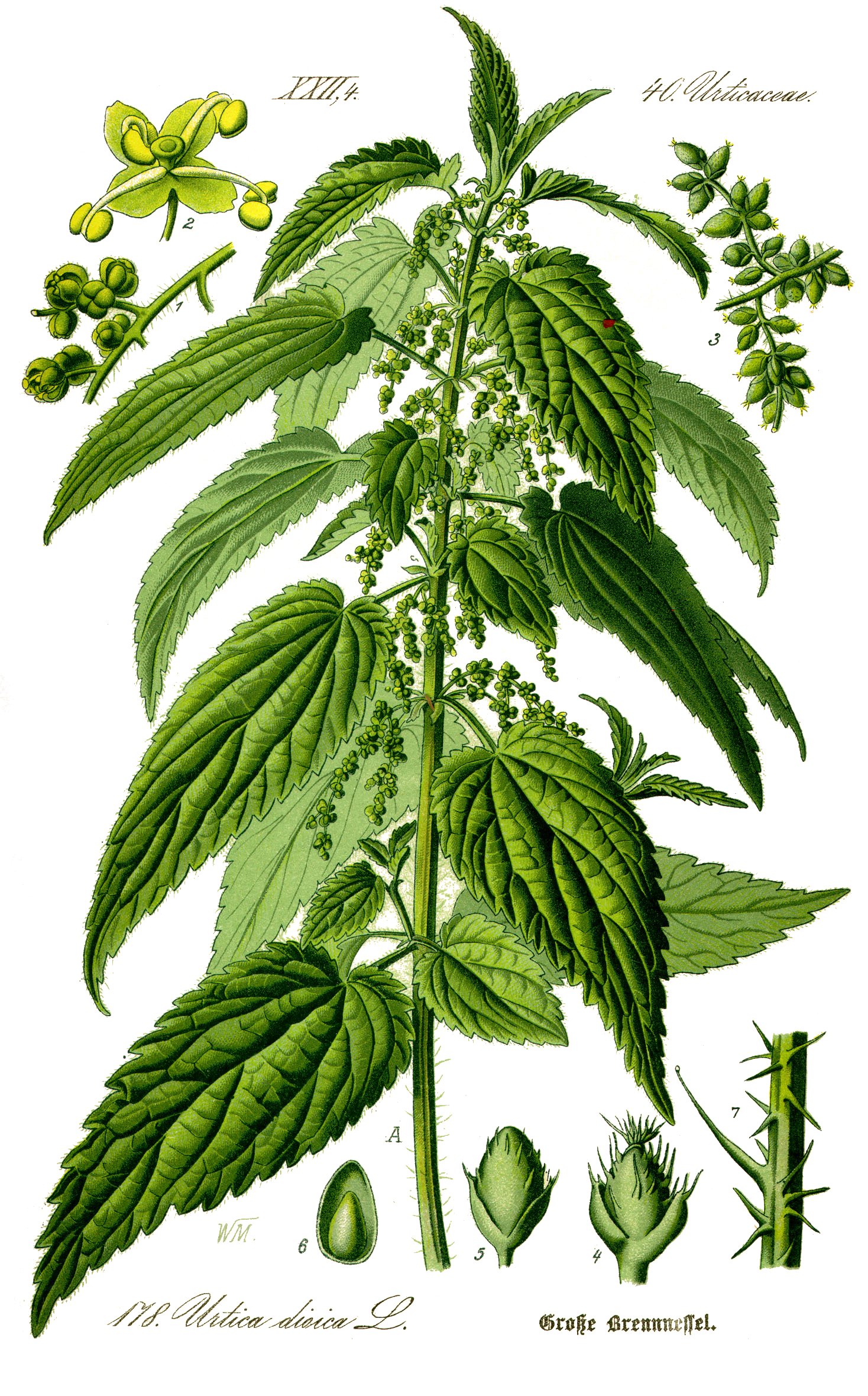When I bought Owl Acres 20-some years ago, the place had been significantly overgrown. Although it had been regularly mowed, around the buildings where the tractor couldn’t get to, the weeds grew thick and happy. My initial efforts at learning about those weeds ended abruptly when I grabbed a stalk of stinging nettle. That stuff burns! It stings wherever it touches the skin, and no matter what you do, you can’t wash it off. It continues to sting for about 24 hours with the sensation spreading from the initial site to entertain the arm and hand.
Upon my adamant insistence, I got most of the stinging nettle removed from the areas where I was likely to go, including, once it was built, around the house. It was kept at bay until my nine-year absence when tenants neglected the finer points of weeding, and it got a new foothold in the ferns and hostas on the north side of the house. So I admit it, I have been loath to go inspecting and weeding in that area for fear of the stinging nettle that I know is there. My instructions once again are, get that menace out of here!
I have heard that stinging nettle is good to eat, although I can’t imagine such a thing. Apparently the young leaves make nice potherbs. H’m—really? Cooking apparently removes the sting.
But what is this thing? And why is it so mean and so valued at the same time?
Stinging nettle (Urtica dioica) is one of several species of nettles that are native to North America. It is an upright perennial plant that spreads by the roots through underground rhizomes, so patches of it develop wherever it gets a start. In the spring, it starts out as a benign plant in shades of green and purple, with purple on the underside of the leaves. The leaves are long and narrow with a pointed tip and are sharply toothed on the edges. They grow opposite each other on the square stem. The leaves and the stem are slightly hairy. The plants have the stinging hairs on the stems, the undersides of the leaves, and some on the upper surface of the leaves. When you bump against the plant, some of these hairs break off, revealing a sharp pointed needle inside. This is where the pain comes in. This needle injects a cocktail of chemicals under the skin, including histamine, acetylcholine, serotonin, and formic acid. This will burn for up to 24 hours, and sometimes it causes a rash. One recommendation is to leave it alone for ten minutes while it dries, and then wash it off with soap and water. I have not found this especially effective. It is said that applying the juice of the leaves of the same stinging nettle will stop the burning sensation. I really don’t want to get close enough to find out.
Stinging nettle blooms in midsummer with tiny inconspicuous flowers. They are wind-pollinated and result in tiny seeds which spread on the wind and colonize disturbed soils.
In spite of discouraging me from weeding and gardening, stinging nettle actually is considered one of the most beneficial plants in our natural pharmacopeia. The stems produce a fiber which has been used for thousands of years, and as recently as the 20th century in some places where other fibers were hard to come by. People used it to make cloth, rope, nets and paper.
Its leaves are high in protein and contain high amounts of Iron, calcium carotinoids, and vitamin C. They make excellent cooked or boiled greens.
Another (rather painful) use of stinging nettle was practiced by soldiers and warriors in ancient times. Rubbing the nettle on their skin caused the expected burning sensation, and that burning sensation kept them from falling asleep.
The medicinal value of stinging nettle has also been recognized worldwide. The Greeks wrote about its curative properties 2,000 years ago, and it’s been in use at least that long by the indigenous peoples of the Americas. The list of things that it is used for ranged from bleeding to allergies, diabetes to pregnancy, arthritis to enlarged prostate and just about everything in between.
I’m not planning to grow stinging nettle on purpose, and we’ve gotten rid of it in the yard and around the house. Still, I have gained a new respect for this many-talented plant. That’s not to say I won’t cuss it when I come in contact with it though.
Public domain illustration from Wikimedia.org by: User:Kilom691. Alt text: Stinging nettle color plate from a book published in Germany in 1885. Shows the plant and details of leaves, stem, seeds and stinging hairs. Upcoming post: a critter that eats this stuff.

5 comments
Stinging nettle is the worst! The only thing that I have found that works is to use duct tape on the affected area as soon as you can, before you use any water. It pulls out all of the very tiny spines that the plant has left. I do it several times and then scrub with Ivy Rest. It doesn’t help completely, but works the best I have found. I try to avoid it at all costs as well.
Sounds like a good idea. I’ll have to keep duct tape handy! .
We had some stinging nettle that I battled for 2 or 3 years. It was in and around our rhubarb plants (not the most convenient place). Joe reacts terribly to stinging nettle (me not so much) so I was the one designated to combat it. I just kept pulling and pulling it. It was tough trying to get all the roots without hurting the rhubarb. This year I never saw any so I apparently won the war.
That does not sound like fun!